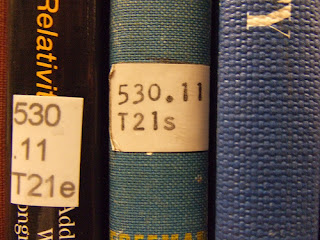- A Dictionary is a collection of words in one or more specific languages, often listed alphabetically, with usage information, definitons, etymologies, phonetics, procunciations, and other information.
- An encyclopedia is a type of reference work, a conpendium holding a summary of information from either all branches of knowledge or a particular branch of knowledge.
- Biographical dictionary is a listing of people, usually in alphabetical order of surname, providing details of dates, titles, birthplace, family, etc.
- Directory is a list of names of residents, organizations or firms in a city, region, country of intervationally.
- Atlas is a volume of maps or charts with or without explanations.
- Gazetteer is a geographical directory listing places, their locations and information about them.
- Yearbook is an annual publication containing current information in brief, descriptive and/or statistical form.
- Almanac is an annual calendar with astronomical and other data.
- Manual is a book of instruction on doing, making or performing something.
- Handbook is a concise ready reference source of information for a particular field of knowledge.
- Bibliography is a list of related library materials of resources, usually subject related
10.03.2554
Chapter 4 Reference collections
9.22.2554
Chapter 3 Sources of knowledge : Libraries
Library Classification
The two main library classification systems are the Dewey Decimal system and the Library of Congress system. Both are expandable tools for sorting books into categories, but they differ in how they categorize books and in the sorts of libraries that use them. They also differ in their basic organizational scheme.
Basics of the Library of Congress System
The Library of Congress system has 21 broad categories, each represented by one letter of the alphabet. For example, books on philosophy, psychology and religion all are have codes starting with the letter B. Books on education start with the letter L. History of the Americas gets two letters: E and F. Many classes have subclasses identified by a second letter; for example, books on the history of education start with LA. Other classes begin with a single letter and then numbers (classes E and F, for example). Subsequent numbers further divide the categories.
Basics of the Dewey Decimal System
The Dewey Decimal System first classifies books into nine broad categories, each identified by a number in the hundreds. For example, books on religion start are in the 200s; books on social sciences are in the 300s. Numbers are assigned within those categories; for example, 201 is for books on the philosophy of Christianity. Some topics use the 10s column for subdivision; for example, books on law are in the 340s; books on criminal law start with 345. Further division of categories is done by adding decimal numbers.
Differences Between the Two Systems: Outline Versus Hierarchy
Differences Between the Two Systems: Which Libraries Use Them
The link you should know:
The Library of Congress website
British Library
Thai National Library
Sripatum University Library
ASEAN Community website
9.11.2554
Chapter 2 Objective and Subjective
Definition of Objective and Subjective
Objective is a statement that is completely unbiased. It is not touched by the speaker’s previous experiences or tastes. It is verifiable by looking up facts or performing mathematical calculations.
Subjective is a statement that has been colored by the character of the speaker or writer. It often has a basis in reality, but reflects the perspective through with the speaker views reality. It cannot be verified using concrete facts and figures.
Here are two terms I tend to use a lot as they are concepts most students should be familiar with.
Simply put subjective means based on personal feelings.
The cake is tasty or gross depending on your personal preference.
Sources of information
Primary sources
A primary source of information is one that provides data from an original source document. This may be as simple as an invoice sent to a business or a cheque received. It may be more complex, such as a set of sales figures for a range of goods for a tinned food manufacturer for one week, or it may be a set of sales figures over several weeks and several locations. There are many examples of primary sources in many walks of life, but generally a primary source is defined as being where a piece of information appears for the first time.
Secondary sources
A secondary source of information is one that provides information from a source other than the original. Secondary sources are processed primary sources, second-hand versions. Examples of secondary sources could be an accounts book detailing invoices received, a bank statement that shows details of cheques paid in and out. Where statistical information is gathered, such as in surveys or polls, the survey data or polling data is the primary source and the conclusions reached from the survey or the results of the poll are secondary sources.
Tertiary sources
Tertiary sources consist of information which is a distillation and collection of primary and secondary sources.
Good and Poor information
Characteristics of good information
Good information is that which is used and which creates value. Experience and research shows that good information has numerous qualities.
Good information is relevant for its purpose, sufficiently accurate for its purpose, complete enough for the problem, reliable and targeted to the right person. It is also communicated in time for its purpose, contains the right level of detail and is communicated by an appropriate channel, i.e. one that is understandable to the user.
Further details of these characteristics related to organisational information for decision-making follows.
1) Accuracy
2)Completeness
3)Consistency
4) uniqueness
5)Timeliness
Chapter 1:Data, Information, Knowledge, Wisdom
From Data to Wisdom
Brief Definitions
The content of the human mind can be classified into five categories:
- Data: symbols
- Information: data that are processed to be useful; provides answers to "who", "what", "where", and "when" questions
- Knowledge: application of data and information; answers "how" questions
- Understanding: appreciation of "why"
- Wisdom: evaluated understanding.
สมัครสมาชิก:
บทความ (Atom)






